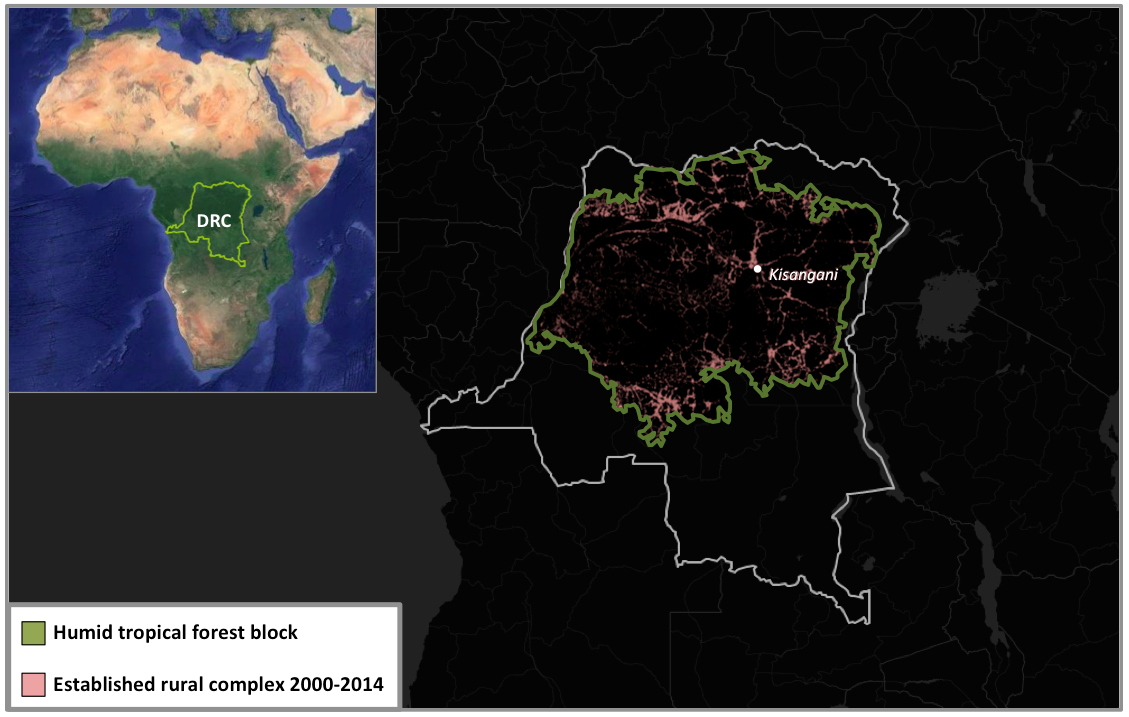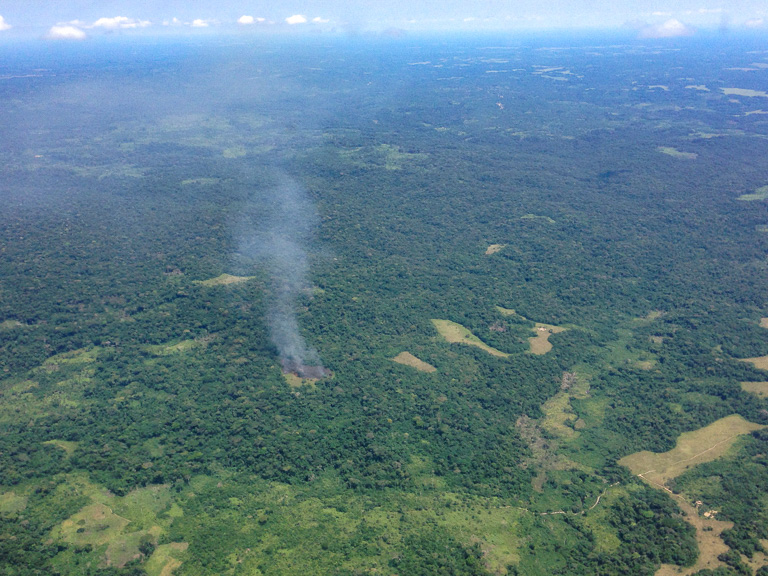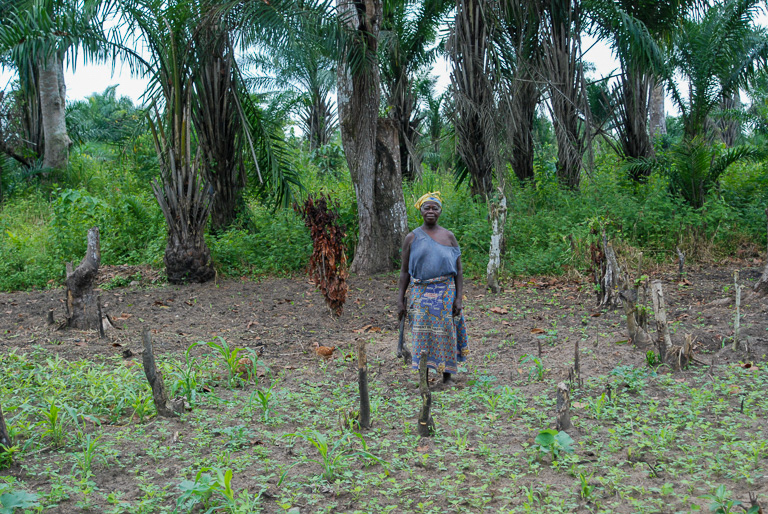The effects of commercial logging, mining and farming can ripple beyond the boundaries of the operations, leading to the substantial loss and degradation of nearby forest for subsistence agriculture, a new study on the Democratic Republic of Congo (DRC) has found.
The finding, reported Jan. 16 in the journal Land, wasn’t surprising, said lead author and geospatial scientist Giuseppe Molinario in an interview. Once such operations are established, the people employed by them and their families often resort to shifting cultivation to support themselves, and other studies have noted the “contagious forest loss and degradation” that tends to crop up around big plantations.
The research represents “the first time that anybody has quantified it on the national scale,” added Molinario, who recently completed his Ph.D. at the University of Maryland.
He and his colleagues began with maps of the rural complex in the DRC — that is, the mix of farmland and fallows in the subsistence agriculture cycle on which most of the country’s farmers depend. They then chose hundreds of random points in areas where the rural complex had expanded between 2000 and 2015, as well as distinct “perforations” in the forest where bursts of deforestation appeared beyond the complex.
The team used a similar technique in previous studies and found that between 90% and 92% of forest loss in the DRC stems from this cyclical pattern of agriculture. Across the Congo Basin, shifting cultivation accounted for 84%. Those figures are much lower in many of the world’s other forests, Molinario said.
“As we get more fertilization and mechanization and infrastructure, there are more means to have a different type of agriculture which is more efficient and less resource-intensive,” he said. Vast soy fields and cattle pastures are driving much of the forest loss in Brazil, for example. In Southeast Asia, commercial oil palm plantations continue to supplant rainforest.
Those industrial operations don’t play as big a role in the DRC, though Molinario and his colleagues say that they are expanding. As the rural complex ballooned between 2000 and 2015, it ate up nearly 47,000 square kilometers (18,000 square miles) of the DRC’s forest, according to the team’s analysis. Isolated perforations accounted for more than 25,000 km2 (9,600 mi2). Together, that’s an area of mostly primary forest about the size of the West African country of Sierra Leone.

Image showing the area of interest for Molinario’s research, adapted from Molinario et al., 2017 (CC BY-SA 3.0). National boundaries and satellite imagery courtesy of Global Forest Watch and Google Earth.
For the current study, the researchers also drew a buffer around each sampled point and searched for any large-scale logging, mining or farming within that band.
Their analysis showed that these commercial operations on their own accounted for a very small amount of the expansion of the rural complex and those forest perforations in the DRC — no more than 0.5% — between 2000 and 2015.
But when they looked at that buffer around the sampled points, they found that nearly 12% of the expansion and 9% of the perforations during the 15-year study period occurred within 5 km (3.1 mi) of large-scale logging, mining or agriculture — strong evidence that workers on these industrial operations and their families are clearing forest for their farms. What’s more, Molinario said, analyses boiling down the deforestation caused by these operations in their immediate vicinities are “very limited and probably inaccurate because they don’t take into consideration this broader dynamic.”
The stage is set for this forest loss to continue. Bedeviled by extreme poverty and paltry infrastructure, ongoing conflict and unrest, and a growing population, the country’s 85 million people have few alternatives.
“It seems like shifting cultivation is the only way possible to survive, to make a living for you and your family and your communities,” Molinario said.
By his colleagues’ calculations, the DRC’s bank of tropical forest — the second-largest in the world, behind Brazil’s — could be just a memory by 2100.
“Shifting cultivation is still rising,” Molinario added, “and it will rise together with all these commercial land uses until basically all of the forest is just completely degraded or eaten up.”
Original story at Mongabay.com



